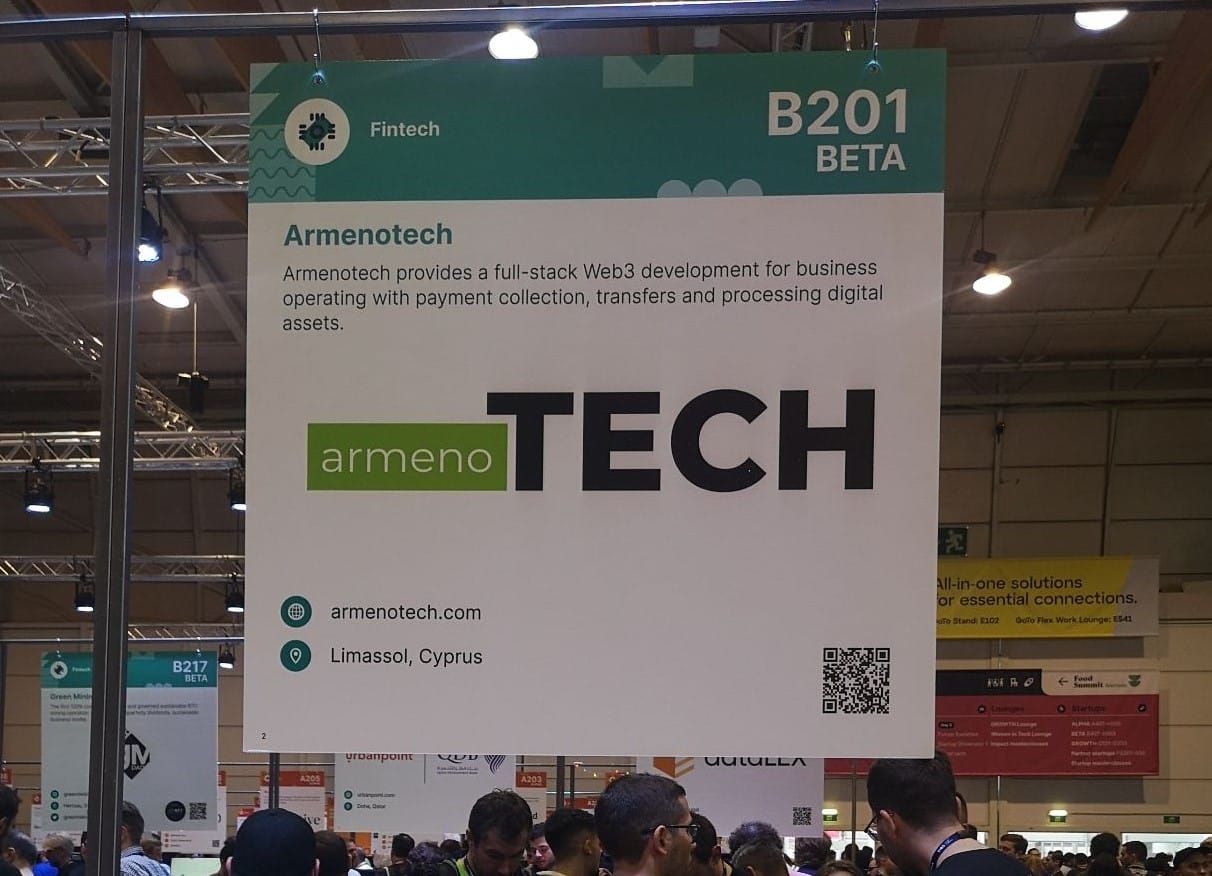Cyprus-based fintech firm Armenotech, alongside its international strategic partner, Tempo France, recently stated that EURO-pegged stablecoins have “the most promising and highest potential trajectory in the modern finance world”, with the two companies citing
their joint internal research and analysis.
Cyprus-based Armenotech is specialised in pioneering software for integration into the Stellar blockchain, while the company is also focusing on the development of a wide spectrum of state-of-the-art IT solutions, ranging from payment processing and technology for CFD training to blockchain integration and fintech domains.
The company has been playing a key role in projects around the world, including Spain and France, Vietnam and Malaysia, as well as India and the Philippines.
According to the report, the current volume of demand for EURO-pegged stablecoins exceeds €78 billion at the actual current supply of as little as €550 million, meaning that less than 1 per cent of the demand is being covered.
Moreover, the companies said that they expect the demand for EURO-pegged stablecoins to grow further.
“We are living in a time when the payment industry is going through enormous rates of competition. This means the operators have to provide the lowest possible costs, highest transaction speed and full transparency,” Tempo France Alla Zhedik CEO said.
“This in turn leads to a growth in demand for new IT solutions and implementation of digital finance in the sphere of traditional finance,” Zhedik added.
Zhedik went on to say that “the best solution is to embed the blockchain in the payment algorithms”.
“These are so-called bridging projects between digital finance and traditional finance,” she said, adding that “that is where stablecoins play a great role”.
According to the two companies, who are also strategic partners in Stellar-empowered payments, the number of bridging projects increased by around 30 per cent throughout 2022. Moreover, according to early estimates, the “indicator is definitely not going to be less” than that percentage.
In the first quarter of 2022, Armenotech, whose core specialisations are payment processing and tokenisation, registered a 35 per cent hike in the number of enquiries, coming from potential clients and requesting information on bridging projects.
Tempo France and Armenotech noted though that while European companies use EURO as a payment currency, the stablecoin field is still dominated by the USD-pegged stablecoins.
As a reflection of this situation, one does not need to look beyond the fact that the current circulation of all USD-backed stablecoins exceeds $130 billion.
“For European companies operating with EURO, this leads to extra conversion transactions,” Zhedik said.
“The growing demand for much higher circulation of EURO- nominated stablecoin is logical, critical and in the air,” she added.
What is more, Armenotech and Tempo France said that the growth in the potential of EURO stablecoin will be ranging from 15 per cent to 20 per cent in the current year.
“The main drivers for the indicator to grow will be an increase in the payment industry, growing competition between the market players as well as expansion of bridging projects in various parts of the world, particularly in third world countries,” said Daniel Gazaryan, CBO of Armenotech.
Additionally, Armenotech and Tempo France noted a high level of monopolisation when there are “almost no regulated instruments (stablecoins) in the field”.
The companies believe that most of the stablecoins are not yet fully regulated and that is the main driving factor that is scaring off clients and investors, most of whom are companies.
“The recent initiatives suggesting that central banks should veto large stablecoins if they have fears they could upend monetary policy will be a great impetus to the market because it will bring maximum transparency and regulation to the segment,” the two companies said.
“Armenotech and Tempo France support the initiatives when the central banks have the power to veto the widespread introduction of stablecoins if they affect public policy goals, including financial stability or monetary policy,” they added.
Also, the two firms said that there is currently a very strong factor that is a great obstacle to the development of the EURO stablecoin, with this being a low level of proper analysis, which keeps many investors, as well as payment operators, away from the market.
In spite of some problems to be solved, Armenotech and Tempo said that they have a positive outlook for the future of the Euro-pegged stablecoin market.
Their experts stated that they “expect a few new stablecoins to appear in the course of 12 months and demand for the financial instrument will continue to grow due to increasing competition in the payment sector”.
“We also expect the circulation to triple to $1.5 bln within the next 8 to 12 months,” the two companies added.
Moreover, according to an announcement, the indicator is expected to experience a twofold growth every 6 months.
The companies explained that this will be due to growing demand coming from European private investors and payment systems that offer solutions based on blockchain platforms.
Currently, the firms continued, payment systems use Euro-pegged stablecoins in very little amounts, but the popularity of Euro stablecoins will be growing not only within the EU but also globally.
“The EU trade will be increasing globally and the payment industry will be growing too,” Armenotech’s Gazaryan said.
“It will require more and more advanced technologies combining digital and traditional finance,” he concluded.







Click here to change your cookie preferences